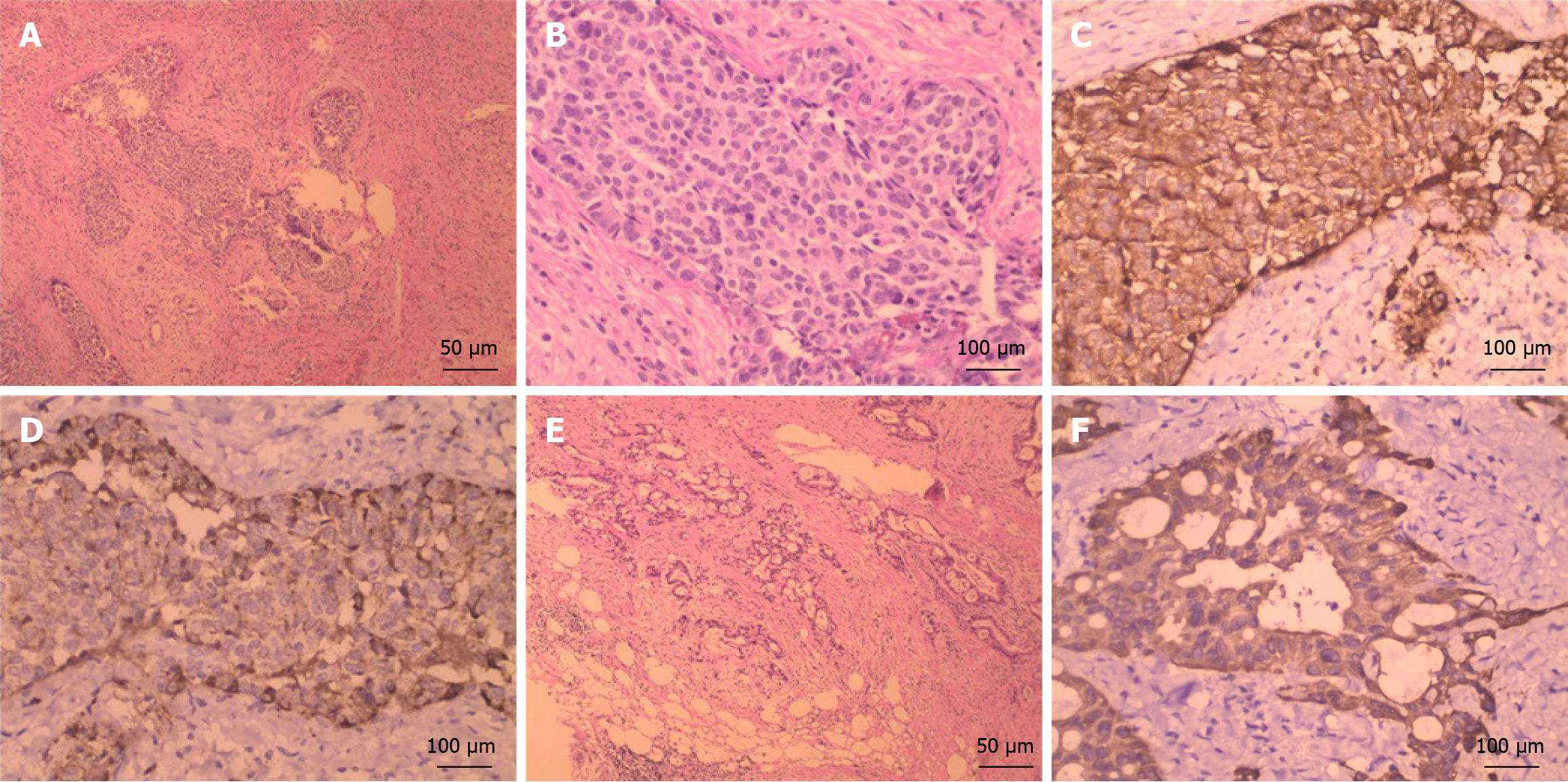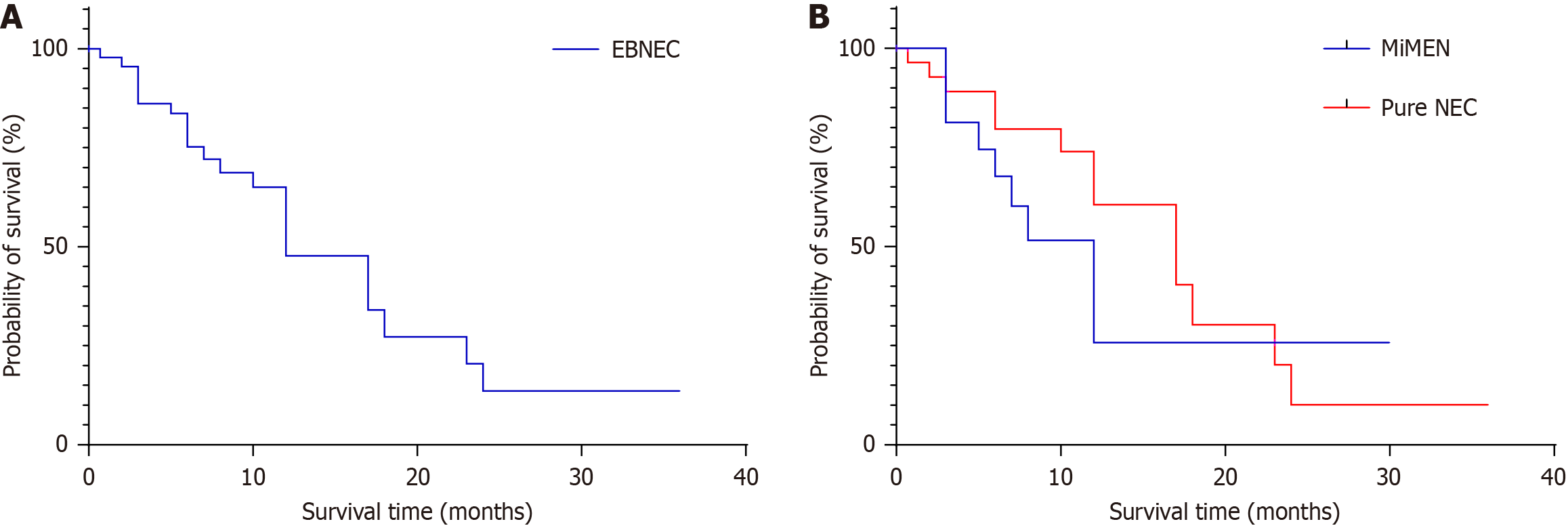Copyright
©The Author(s) 2024.
World J Gastrointest Surg. May 27, 2024; 16(5): 1449-1460
Published online May 27, 2024. doi: 10.4240/wjgs.v16.i5.1449
Published online May 27, 2024. doi: 10.4240/wjgs.v16.i5.1449
Figure 1 Imaging findings.
A: Magnetic resonance cholangiopancreatography showed severe stenosis at the mid-portion of bile duct; B: Endoscopic ultrasound found a hypoechoic mass in the mid-portion and inferior portion of the common bile duct (white arrows); C: Computed tomography 3 d after surgery revealed significant pancreatic necrosis and exudation.
Figure 2 Histopathologic features in neuroendocrine carcinoma of the common hepatic duct coexisting with distal cholangiocarcinoma.
A: The neuroendocrine carcinoma (NEC) showed a nested organoid growth pattern [hematoxylin and eosin (HE), × 100]; B: The NEC cells were round or oval, hyperchromatic nuclei and scant cytoplasm (HE, × 400); C: Immunohistochemically, the NEC cells were positive for synaptophysin(HE, × 400); D: Immunohistochemically, the NEC cells were positive for chromogranin A (HE, × 400); E: The distal cholangiocarcinoma (dCCA) cells arranged in irregular tubular and papillary structures (HE, × 100); F: Immunohistochemically, the dCCA cells were positive for cytokeratin 19 (HE, × 400).
Figure 3 Kaplan-Meier survival curve of the 45 neuroendocrine carcinomas of the extrahepatic bile duct patients with survival follow-up data.
A: The median overall survival was 12 months; B: Kaplan-Meier survival curves of extrahepatic bile duct patients with neuroendocrine-non-neuroendocrine neoplasm and pure neuroendocrine carcinoma were compared and log-rank test were assessed for significance (P = 0.20). MiNEN: Mixed neuroendocrine-non-neuroendocrine neoplasm; EBNEC: Extrahepatic bile duct patients with neuroendocrine-non-neuroendocrine neoplasm; NEC: Neuroendocrine carcinoma.
- Citation: Chen F, Li WW, Mo JF, Chen MJ, Wang SH, Yang SY, Song ZW. Neuroendocrine carcinoma of the common hepatic duct coexisting with distal cholangiocarcinoma: A case report and review of literature. World J Gastrointest Surg 2024; 16(5): 1449-1460
- URL: https://www.wjgnet.com/1948-9366/full/v16/i5/1449.htm
- DOI: https://dx.doi.org/10.4240/wjgs.v16.i5.1449











